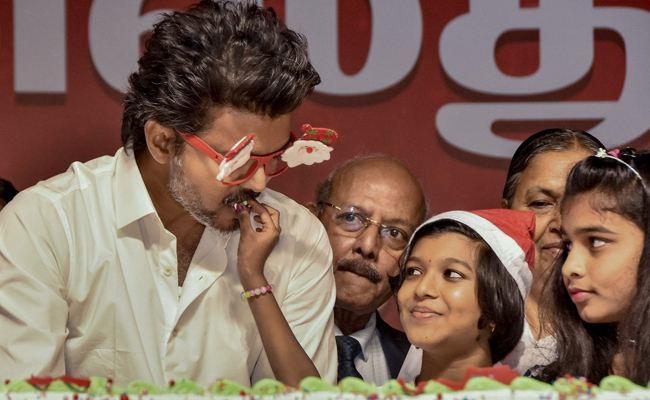Barcelona (PTI): The effects of prolonged screen use during childhood have been extensively studied in recent years.
Evidence indicates that excessive screen time is harmful both to neurological development and socialisation.
This is because, among other things, they cause us to disconnect from our surroundings, leading to very real addictions that often require intervention from a mental health professional.
Additionally, screen use can cause neurocognitive learning disorders at the early stages of personality formation in childhood.
But above all, excessive time spent in front of televisions, video games, mobile phones and tablets during childhood and adolescence leads to a sedentary lifestyle.
In fact, there is already a proven link between overuse of screens and the increase in sedentary lifestyles among children.
Now, a new dimension can be added to all these reasons for limiting the time children spend in front of televisions, video games and mobile phones.
According to a new study, led by Andrew Agbaje at the University of Eastern Finland in Kuopio and presented at the European Society of Cardiology Congress 2023, sedentary children are at increased risk of heart damage in early adulthood.
In other words, inactivity during infancy may well set the stage for heart attacks and strokes later in life, even if weight and blood pressure are within the normal ranges.
Excessive screen time increases heart weight The research analysed the cumulative effects of sedentary time on the heart, drawing data from Children of the 90s, a landmark multigenerational study that is unique in its breadth and depth of scope.
It tracked the health and lifestyles of 14,500 babies born in 1990 and 1991 into their adult lives.
Of the children included in the study, 766 –55 per cent of them girls and 45 per cent boys– were asked at age 11 to wear a smart watch that monitored their activity for seven days.
At age 15 they were asked to repeat this, and then again at 24. In parallel, an echocardiographical analysis was taken of each subject's left ventricle at ages 17 and 24, which was then adjusted for height, sex, blood pressure, body fat, tobacco use, physical activity and socioeconomic status.
The results indicated that at age 11 the subjects were sedentary for an average of 362 minutes per day. In adolescence (age 15) this increased to 474 minutes per day, and then went up to 531 minutes per day in adulthood (age 24).
Sedentary time increased by an average of 2.8 hours per day over the 13 years of the study. A large amount of this sedentary time was spent in front of screens. `Most seriously, the echocardiography registered an increase in heart weight among young people that correlated directly to time spent being sedentary.
Once they entered adulthood, this increased the likelihood of heart attacks and strokes.
This direct relation between accumulated inactive time and heart damage was independent of body weight and blood pressure.
Tell me how much you moved as a child… By now it is common knowledge that sedentary lifestyles increase the risk of metabolic conditions (such as obesity and type 2 diabetes), neurodegenerative disease and cardiovascular disease in adults.
The new study shows that sedentary behaviour at a very early age –especially unrestricted screen time– may lead to an earlier onset of cardiovascular disease in adulthood.
For this reason, it is of the utmost importance that parents encourage children and adolescents to move around more, and limit the time they spend watching television, or using social media and videogames.
As we have already suggested with regard to premature birth, the list of known, conventional cardiovascular risk factors (smoking, diabetes, hypertension, etc.) should be revised and updated as a result of the study to include the cumulative time spent engaging in sedentary behaviour in childhood.
We should all, from an early age, heed the words of Martin Luther King when he said "If you can't fly, then run. If you can't run, then walk. If you can't walk, then crawl, but whatever you do, you have to keep moving." (The Conversation) FZH
Let the Truth be known. If you read VB and like VB, please be a VB Supporter and Help us deliver the Truth to one and all.
Bengaluru (PTI): Bengaluru City Police (BCP) on Monday said that it has, in collaboration with cab aggregator platforms Uber and Ola, implemented a technology-driven integration aimed at enhancing the safety of riders and drivers.
It would also strengthen emergency response mechanisms across the city.
As part of this initiative, emergency call facilities have been incorporated within the Uber and Ola mobile applications used for booking rides, it said.
ALSO READ: Doctor assaults patient at Shimla hospital; probe ordered as video sparks protest
Through this integration, riders and drivers seeking emergency assistance can directly share real-time location data, trip details, and contact information with Bangalore City Police's 112 emergency response infrastructure from within the Uber/Ola app itself, an official release said.
Noting that this seamless flow of critical information enables quicker police access during emergencies, facilitating faster response times and potentially life-saving interventions by first responders, it said the initiative is a significant step towards leveraging technology partnerships to ensure safer urban mobility and improved public safety.





